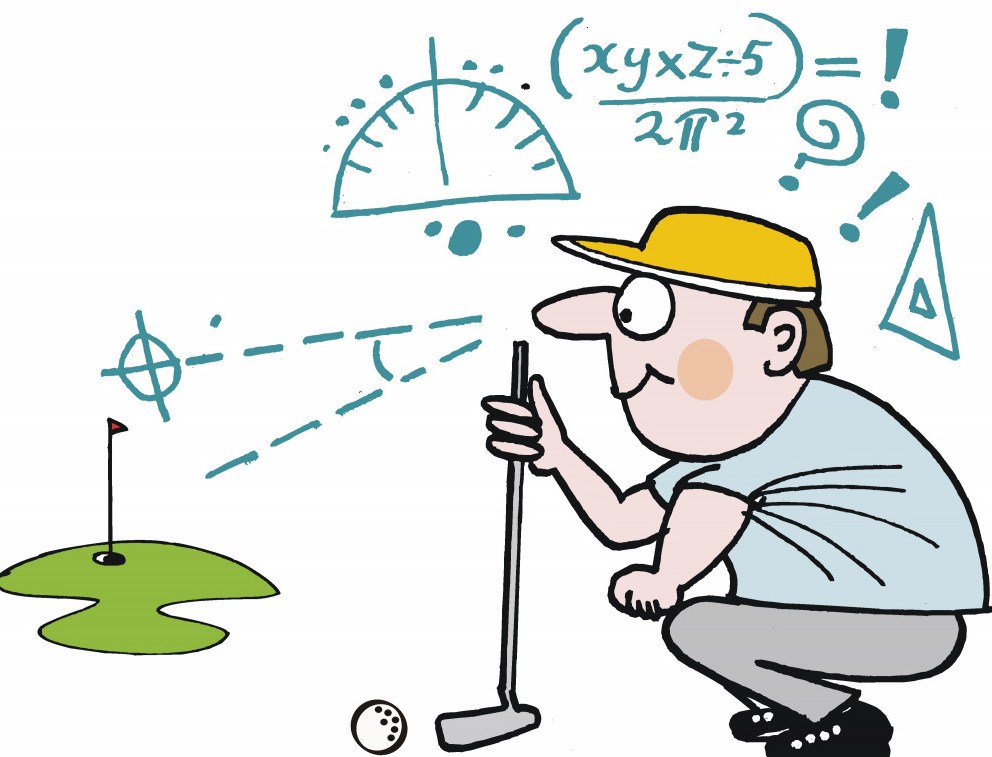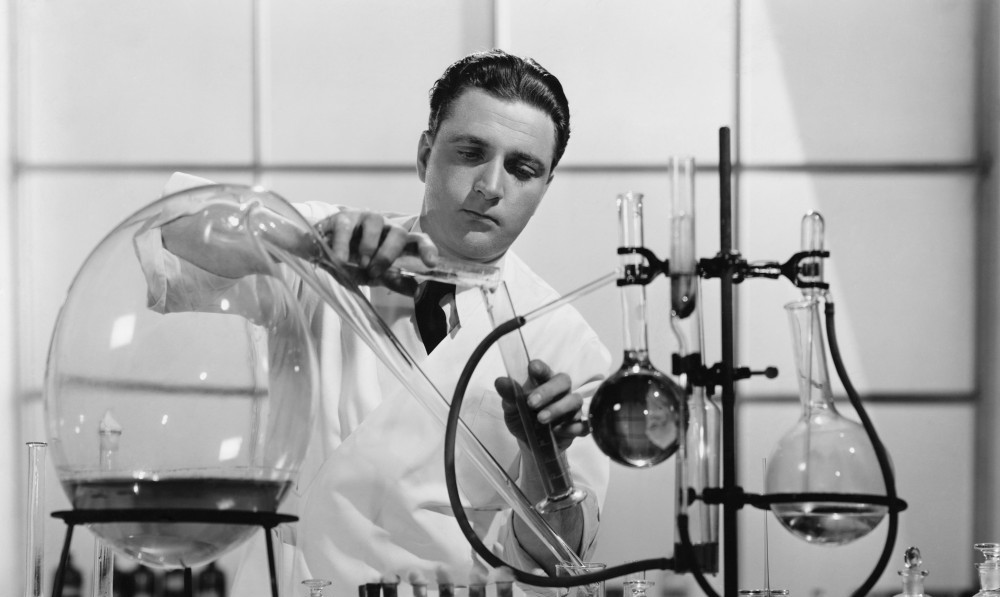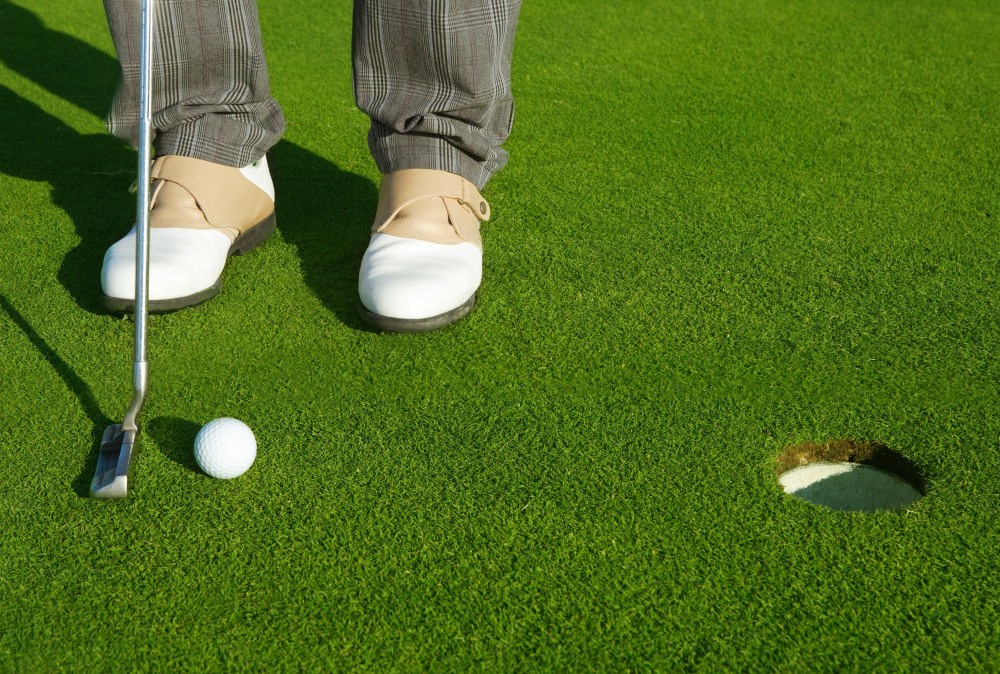Putting is a bit a sensitive issue with me as you might have seen after my series on the yips. It isn’t exactly that I am a bad putter. I feel like I am occasionally very good, but success on the greens is a fragile thing. One bad day (or in fact one bad putt) can lead to a cascade of doubt and three putts. In theory, I enjoy the challenge of picking a line, judging pace and so on. In practice, it just adds a lot of stress to my game. That being said, I thought an article that walks through the process of how to read the green in golf would be a good thing, either for those who are wanting to know how to do it or perhaps just as part of my own putting therapy!
Green reading is generally part art, part science. There are certain methods that get very close to a scientific analysis, but I am not totally convinced this is possible. The reason for this is that I have seen the results of putts on exactly the same line at exactly the same speed having different outcomes. This is usually done with something like a stimpmeter which is nothing more than a slop that the ball rolls down to measure green speed.
If 100 putts are rolled down this slop from exactly the same point without moving the position of the stimpmeter at all (so on exactly the same line) you would expect the putt to do exactly the same thing. In reality, it doesn’t work like that. Even of relatively short putts into the hole, some will miss. Why is this? Who knows really. The ball hits a blade of grass slightly differently and suddenly the ball lips out rather than dropping.
Can You Really Learn How to Read the Green in Golf?
This might make you think that trying to read the green is useless. I don’t think this is the case, but you have to accept that at least a part of what happens is simply out of your hands. Even something like Aimpoint which without a doubt has a lot going for it in terms of giving a golfer the tools to make an effective read certainly can’t claim to rule out all the variables, the biggest of which is simply “driver error” when we have to actually try to hit the damn ball into the hole!
The basics of putting are just that, basic. We only need to get two things: line and speed, with one being dependent on the other. For example, a slower putt will break more and therefore can’t go on the same line as a more firmly hit putt. In fact, this is really where science and art meet as far as reading a green goes. There isn’t generally just one way to hit a put. You can strike it firmly and remove the break as we say, but the downside is that a potential miss is going to be further away. Or you can try to drop it in dead weight but doing this means playing for more break because the ball will deviate from its path much more if it rolls slowly.
Before Getting to the Green
Back to actually reading these greens then. I think the first part of good green reading actually comes before you get on the green itself. It is usually easier to see the overall slope of a green from a distance when you are still some way away. The aim here isn’t to pick out those subtle contours, but to get the overall slope.
The next thing for me is thinking about the previous greens. Unless you are on the first hole or two, you know how fast/slow they have been rolling. Sometimes there may even have been a difference between what you see at what actually happened to the ball in terms of speed.
You can also get this information from the practice green but I would be a bit wary here. I don’t know how this works at the very highest level, but I would say that I actually rarely play on courses where the practice green really plays like the on course greens.
Now we need to look at the specific putt in front of us. Something I have learned to appreciate over the last year or two is just how different a putt can appear when looking at it from the other direction. This can even be to the point of looking like it will break in the opposite direction! Even if it isn’t this extreme, there is often at least a small difference when we stand behind the hole and when we stand behind the ball.
All this takes time and as someone who is a fan of ready golf and not wasting too much time on the course, you should try to work on this before it is actually your turn to putt. Get on the green, look at the line and then go around to the other side behind the hole and compare.
Picking the Right Line
When you look at the line, you have a couple of options. I find that the lower I am, the easier it is to actually see this line. You don’t necessarily need to go to the lengths of Camilo Vilegas and his famous spiderman pose to see the line, but at least crouching down makes sense.
You could also use something like a plumb bobbing approach here too. This involves holding the putter vertically in front of your eyes towards the hole. Personally, I don’t find this helps at all but many like it as a way to show up slope from one side to the other. Aimpoint does something similar using a number of fingers held up depending on the degree of slope.
I don’t like these methods particularly because I feel like the human brain is actually quite amazing at taking information from what we see and transferring it into what we need to do in terms of hitting a putt on the right line. Anything that makes this too artificial can be a bit of a problem for me but as always, this is going to be quite different from one person to another and your mileage may vary.
Once we have a good idea of this line, we need to complete our green reading and associate this to a pace of putt. Many (in fact I would say most) golfers are going to do this by hitting ‘virtual putts’ from the same place as the actual putt. This is nothing more than standing over the ball mark and putting without the ball. It is the best way to get a natural feeling for just how hard we need to hit it.
The final piece of the puzzle needs to take all this theoretical stuff and turn it into a good putt, which is, of course, the hardest part of the whole thing. There are some golfers who get so good at reading greens that they ‘see’ a virtual line that takes the ball to the hole. In truth, this actually happens to many of us now and again when we are really in the zone. At this point, putting becomes easy, any thoughts of the yips are out of the wonder and we wonder what all the fuss was about as put after putt seem to fall!
Pace is Key
The rest of the time, it makes more sense to go for a more practical approach. This involves picking a point much closer to the ball but on the intended line of the putt. Depending on how much break there is and how long the putt, this can actually be almost in a completely different direction. Another version of this is to visualize the apex point, or the highest point of the break before the ball falls back towards the hole. Either way is fine but generally the closer the spot is to the ball (within reason) the easier it will be to actually find the right line.
Once this is done, the key to make this green reading work pay off is to actually forget the hole altogether. We know how fast the putt needs to roll and we know the point perhaps a few feet in front of the ball that we want to hit. Our read says that if we do this, the ball will carry on along its line and we will sink the putt.
Of course, putting probability tells us that we will actually miss more than we make, and this is more and more true the further we get from the hole. However, if we do this, we can actually gt better at reading greens. For example, if we see that we generally know that we miss on the high side, we know that either we are consistently thinking the greens are slower than they actually are and hitting it too hard or we are reading too much break into the putt. The low side miss implies just the opposite.
This lets us compensate for this in our green reading and progressively we should get better at it.
Having this sort of simple method should let us really gt better in how to read the green in golf. It doesn’t need to involve any pseudo-science, or even a detailed contour map of the green and once you get used to it, it shouldn’t slow down play at all. It will lead to more made putts and certainly improve confidence on the green which is always a good thing.




